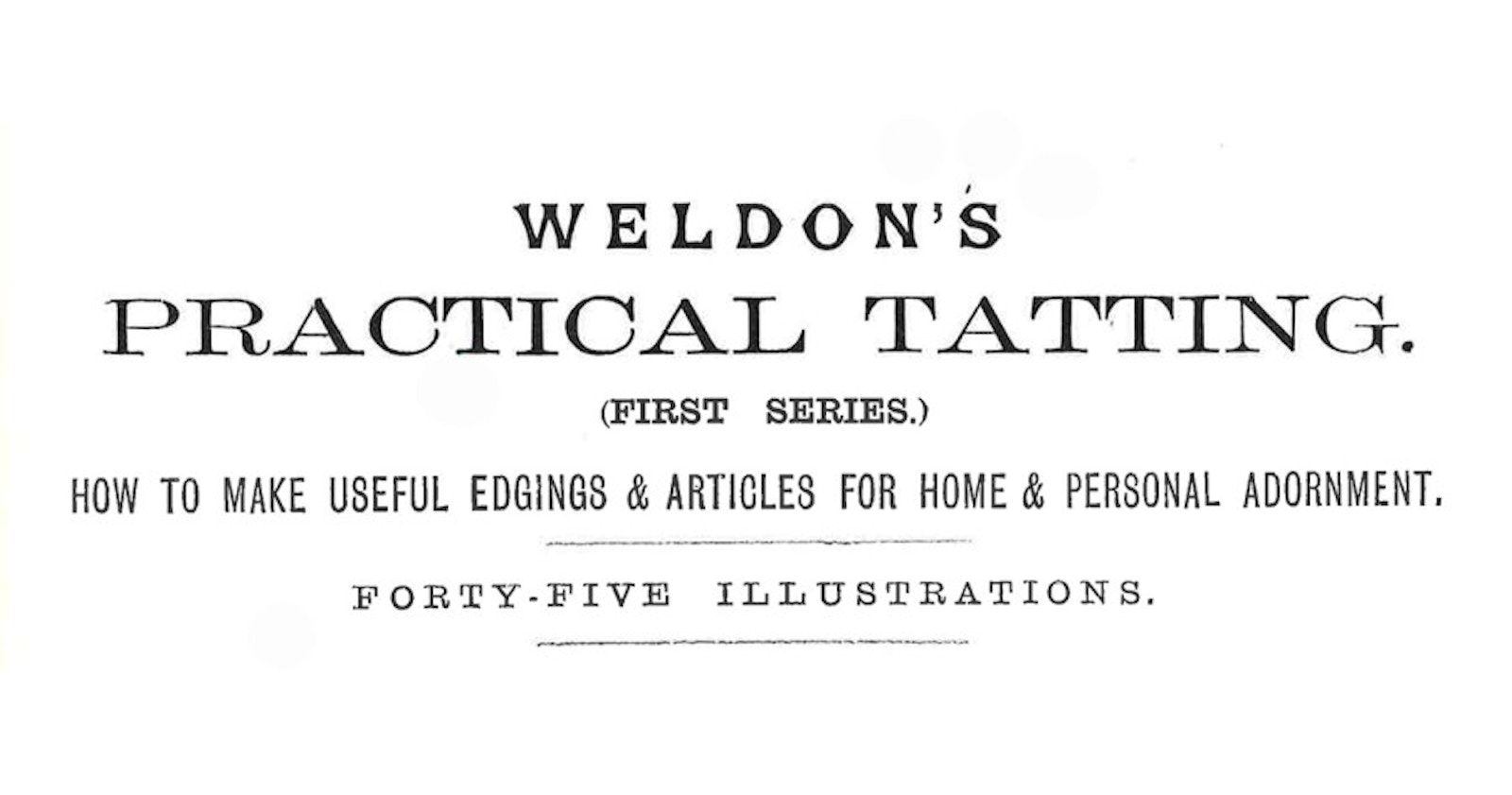Weldon’s Practical Needlework is known mostly for their whimsical yet practical knitting and crochet patterns. But did you know that they house a wealth of information on Victorian tatting, too? Tatters rejoice! In Volume 4, Weldon’s offers up an introduction and patterns that are sure to delight—Weldon’s style!
The following introduction to tatting is reproduced here exactly as it appeared in Weldon’s Practical Needlework, Volume 4 published in England in 1889. No alterations or corrections were made.
Illustration of tatting tools from Weldon’s Practical Needlework, Volume 4.
TATTING.
Tatting in its modern form is the revival of a work practised by our grandmothers in the olden times; it has, however, been considerably improved and extended, and now fully deserves to occupy a place among the fashionable needlework of the day.
The old tatting, designated “Frivolité,” was worked simply with one thread, and the ovals were only connected by the little piece of cotton that was missed after one oval was made and before another oval was begun; the ovals themselves were afterwards sewn together with a needle and cotton in such form as to produce the required pattern, and this necessitated a number of tedious joinings which did not add to the beauty or to the durability of the work.
Now, a second thread is introduced into all the best patterns, and by its assistance very elaborate designs can be effected, and bars and scallops can be formed, giving the work an appearance almost equal to the best Point Lace; the second thread also strengthens the work considerably, and enables the joinings to be made by loops and picots without breaking off the cotton from the shuttle.
The word “Tatting” is derived from the French tâter, to touch; the work is composed entirely of single stitches, double stitches, and picots, and the feel or touch of the stitches passing through the fingers is sufficient to enable an experienced tatter to know if it be rightly done; the work need not occupy much thought, or much counting, and can be taken up or laid down at any moment, for the stitches when once made are perfectly safe, and cannot by any possibility become loose or unravelled, indeed, they are with difficulty undone when once formed and drawn up.
Find out more about tatting in our video download Shuttle Tatting with master tatter Georgia Seitz. Then try your hand at tatting this free tatting project from Weldon’s in our blog post “Make a Tatted Square Medallion from Weldon’s.”
Featured Image: Weldon’s Practical Needlework, Volume 4 offers up a wealth of information on Victorian tatting.


